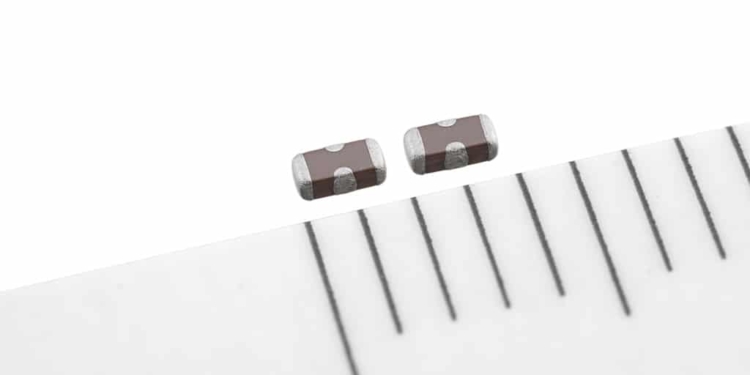source: TDK news
TDK Corporation has extended its lineup of 3-terminal feedthrough filters for automotive applications. The new YFF18AC0J105M type is available in an IEC 1608 package (EIA 0603) with compact dimensions of just 1.6 mm x 0.8 mm x 0.6 mm and features *the industry’s highest capacitance of 1 µF for a feedthrough filter of its size. The component offers a rated current of 2 A and a rated voltage of 6.3 V. The new filter is qualified according to AEC-Q200 and is suitable for a wide range of decoupling applications to protect automotive ECUs from EMI. Mass production of the components began in January 2018.
TDK’s feedthrough filters represent an effective and space-saving decoupling and noise suppression solution for sophisticated automotive applications such as advanced driver assistance systems (ADAS) with their increasingly demanding requirements. In particular, as the functionality of on-board ICs becomes more advanced, conventional decoupling designs require increasing numbers of MLCCs to protect the ECUs from EMI. Thanks to its high capacitance and low ESL, the new feedthrough filter from the YFF18AC series can achieve a lower impedance at a frequency of several ten MHz, for example, than five 0.22-µF IEC 1005 MLCCs connected in parallel. The result is a smaller number of components needed and significant space savings.
In the future, the capacitance range of the automotive-grade feedthrough filters will be further expanded in order to support an even wider spectrum of automotive applications.
* As of February 2018, according to TDK research
Glossary
Decoupling: Insertion of a capacitor between the IC power line and the ground in order to suppress EMI.
Main applications
- Wide range of decoupling applications to protect automotive ECUs from EMI
Main features and benefits
- Highest capacitance in a compact package
- High reliability
- Qualified to AEC-Q200
- Reduces the number of components needed for decoupling
Key data
| Type | Package size | Dimensions [mm] |
Rated voltage [V] |
Rated current [A] |
Rated capacitance [µF] |
Impedance @ 50 MHz [Ω] |
|---|---|---|---|---|---|---|
| YFF18AC0J105M | IEC 1608 (EIA 0603) | 1.6 x 0.8 x 0.6 | 6.3 | 2 | 1 | 0.014 |































